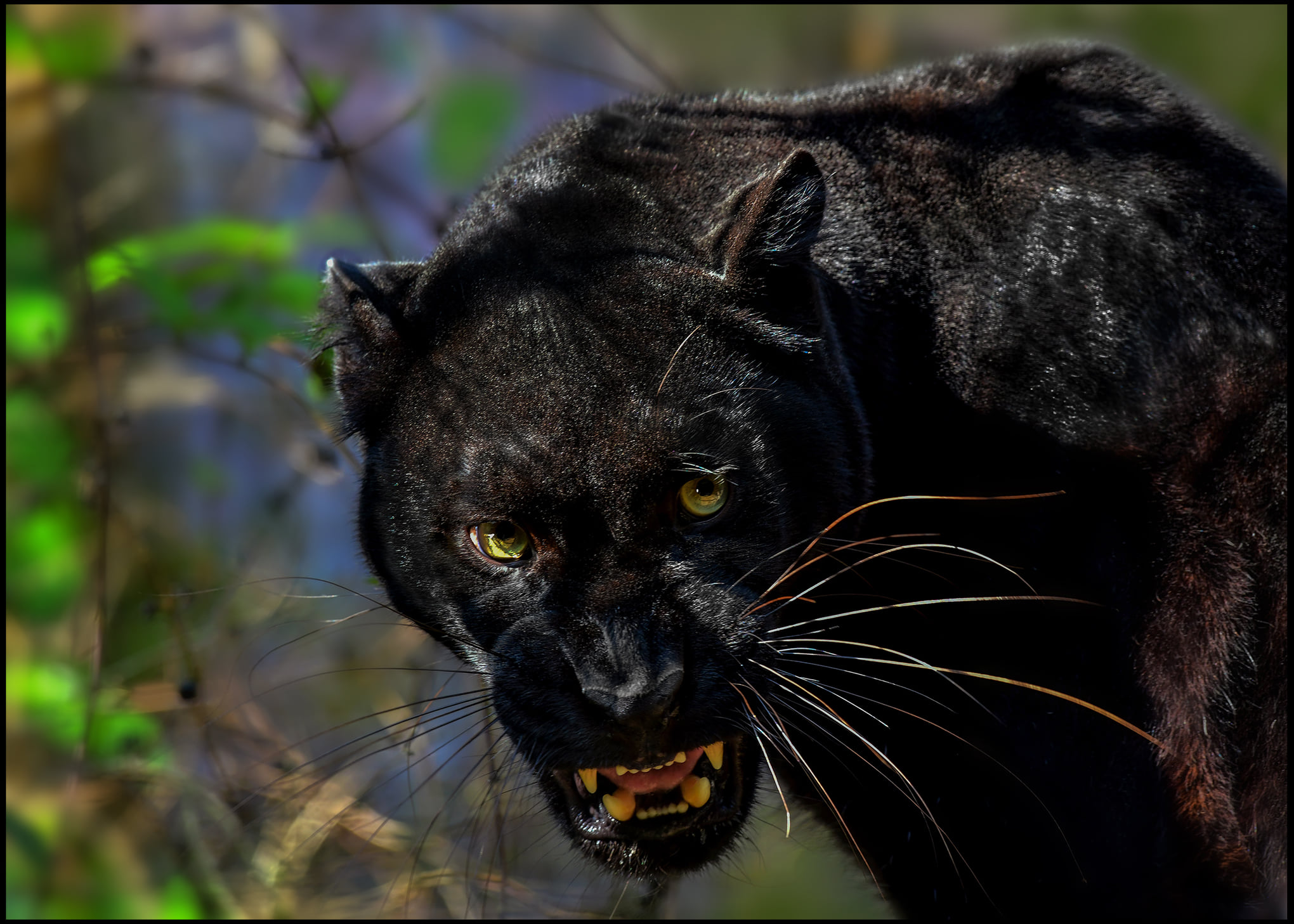Black Leopard

Meet “Bagheera” our Black Leopard
The dark coloration of Black Leopards is produced by a recessive gene that may be present in either, or both parents. As a result, it is not uncommon to have normal and dark offspring in the same litter. Although Black Leopards are dark, their characteristic spots (rosette patterns) are still faintly visible. Black Leopards, often called “Black Panthers,” are more commonly found in the dense tropical rain forest of Southeast Asia, where their dark coloration acts as camouflage in the low sunlight conditions of the forest floor. The term “Black Panther” is not unique to this one species. The term “Black Panther” is not a distinct species itself but is the general name used to refer to any black coloured feline of the Big Cat family. Though most notably used for Leopards and Jaguars, it can also be used to refer to Bobcats, Lynx, Tigers, and Pumas that have the same melanistic colour variant.
Black Leopards reach a body length of 35 to 75 inches and a weight of 60 to 198 pounds, though females are considerably smaller than males. Black Leopards are solitary hunters that prey on monkeys, baboons, rodents, rabbits and birds. Black Leopards are agile hunter with exceptional climbing abilities, often stalking monkeys in tress. In captivity Black Leopards can live up to 20 years. Black leopards populations are threatened due to hunting and loss of habitat. The current status is Endangered.
